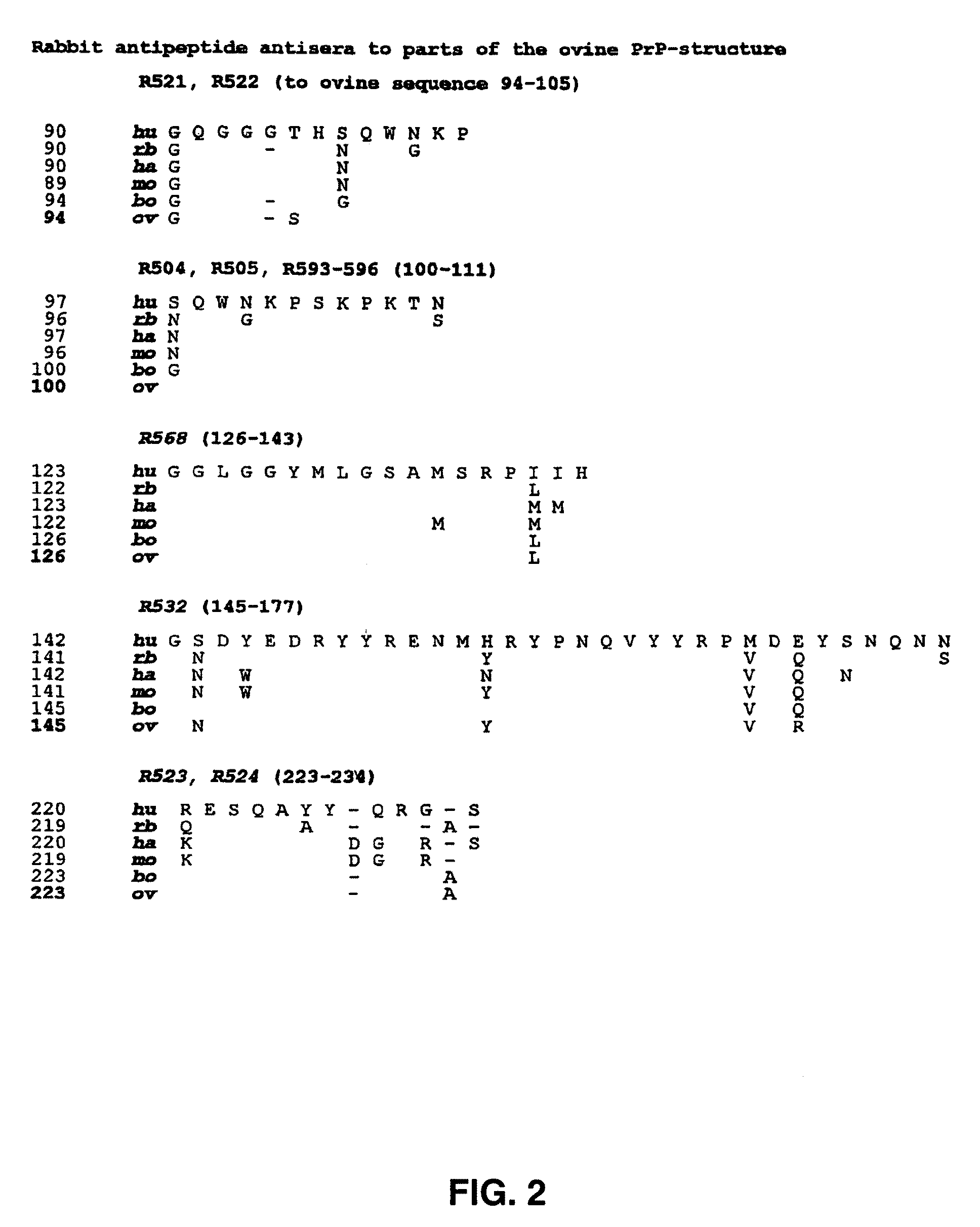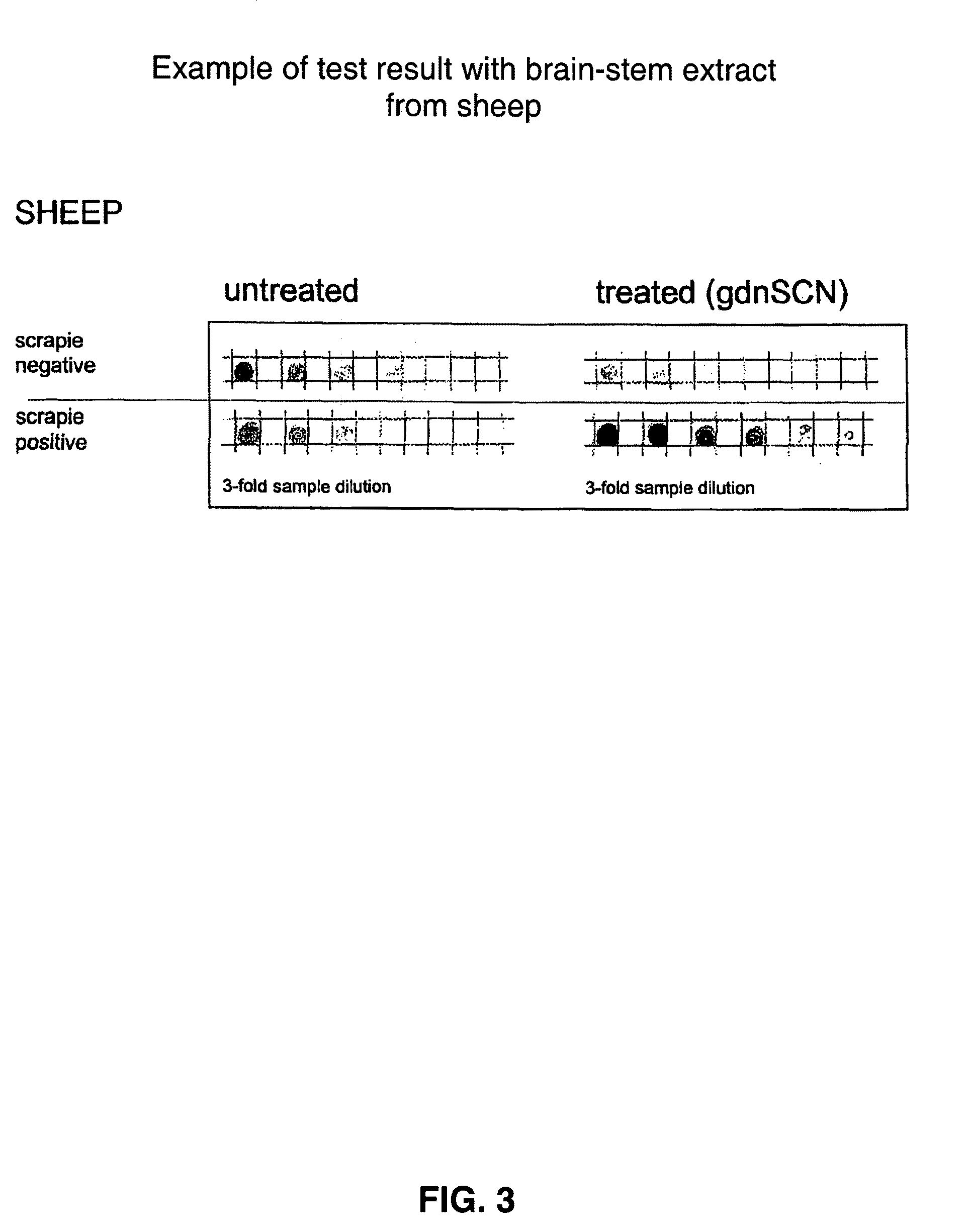Prion test
a prion and test technology, applied in the field of prion test, can solve the problems of not being able to discern the difference between prion strains, no diagnostic method is available to discriminate between bse and scrapie in sheep at present, and the risk of scoring is reduced. , the effect of reducing the risk of scoring
- Summary
- Abstract
- Description
- Claims
- Application Information
AI Technical Summary
Benefits of technology
Problems solved by technology
Method used
Image
Examples
Embodiment Construction
Materials and Methods
[0065]Phosphate buffered saline (PBS), pH 7.2 contained 136.89 mM NaCl, 2.68 mM KCl, 8.10 mM Na2HPO4 and 2.79 mM KH2PO4 in water.
[0066]PBTS: 0.2% (w / v) Tween-20 in PBS.
[0067]Two extraction buffers were used:[0068](a) 10 mM phosphate buffer, pH 7.0, 0.15 M NaCl and 0.25 M sucrose, used by Pan et al. (1992) to prepare microsomal fractions;[0069](b) lysis buffer (Collinge et al., 1996) consisted of 0.5% (w / v) Tergitol (type NP-40, nonylphenoxy polyethoxy ethanol, Sigma NP-40) and 0.5% (w / v) deoxycholic acid, Na-salt (Merck) in PBS, pH 7.2.
[0070]Guanidine thiocyanate (gdnSCN, purity >99%; Sigma G 9277) solutions of 4 M were made up in water (pH 5.8).
[0071]Alkaline phosphatase-conjugated goat anti-rabbit IgG (GAR / AP) was from Southern Biotechnology As. (ITK, Diagnostics B.V., Uithoorn).
[0072]Substrate for alkaline phosphatase was 5-bromo-4-chloro-3-indolyl phosphate / nitro blue tetrazolium (BCIP / NBT; tablets; Sigma B5655).
[0073]Usually, after PrP extraction, protease ...
PUM
| Property | Measurement | Unit |
|---|---|---|
| pH | aaaaa | aaaaa |
| pH | aaaaa | aaaaa |
| pH | aaaaa | aaaaa |
Abstract
Description
Claims
Application Information
 Login to View More
Login to View More - R&D
- Intellectual Property
- Life Sciences
- Materials
- Tech Scout
- Unparalleled Data Quality
- Higher Quality Content
- 60% Fewer Hallucinations
Browse by: Latest US Patents, China's latest patents, Technical Efficacy Thesaurus, Application Domain, Technology Topic, Popular Technical Reports.
© 2025 PatSnap. All rights reserved.Legal|Privacy policy|Modern Slavery Act Transparency Statement|Sitemap|About US| Contact US: help@patsnap.com



